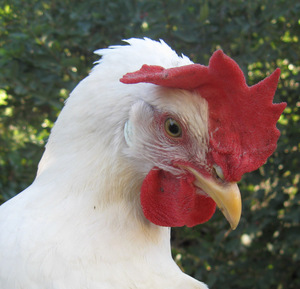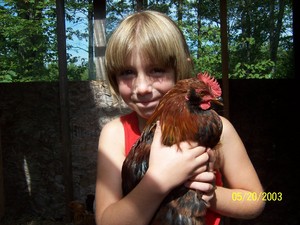Several years ago, our family started raising our own chickens as a hedge against rising egg prices. Our community, like many others, allows its residents to raise a few chickens in their back yard under certain conditions. These conditions include limits on the size of the flock, no roosters, and protecting neighbors from undesirable noise and odors.
While there is no arguing that home grown eggs are better than store bought, a big question many people have is how cost effective it is to raise chickens for a steady supply of eggs. Here are how the prices break down:
Basic supplies to start with
Most laying hens are bought as day old chicks. These tiny chicks range in price from $2-$5 each, depending on the breed. While the store guarantees a 90% accuracy in sexing them properly, chances are you could still end up with a rooster or two. Since chicks are only available for a limited season (Mid March to the end of April), it’s best to buy a few more than you need in case one either dies, or turns out to be a rooster. Cost of chicks: $10-$30
Baby chicks need the warmth of a heat lamp for their first 6 weeks of life. A heat lamp with reflector guard and clamp runs about $18. While the chicks are young, they can be kept in a cardboard box, but have to be moved to a larger container at two weeks. Fresh bedding material is also must, bales of straw or bundles of pine shavings cost about $10 for a 6 week supply. Cost of brooding supplies: $28 plus a supply of big boxes
In addition to a lamp, feeders and waterers are also necessary, and of course, medicated chick feed. An 8 week supply of chick feed runs $7. Total cost of a basic feeder, waterer and feed $17-27
First year supplies
By the time chicks reach 6-8 weeks of age, they will have developed feathers and the weather will be warmer. At this point they will need a coop that contains at least one 18″ nesting box for each hen, plus 8 square feet of fenced run. For 3 chickens, a run of 24 square feet is about the minimum size requirement.
A no frills chicken coop and prefabricated run at a livestock farm store starts at $189.00 with deluxe models starting at $300 with the fenced run costing even more. If you have a storage building on your property like we do, it’s easy to covert this into a hen house with little cost. To build a run, you will need 6 foot t-posts and chicken wire. A 72″ t-post cost $6 each. 150 running feed of 72″ chicken wire costs about $50. Total cost for coop and other stuff: $50-$400.
Food
My chickens free range which saves me a bundle on feed, scratch, oyster shells and other supplements. For those who keep their chickens confined, you’ll need to feed each chicken 1/3 pound of food a day, along with a mix of oyster shells and grit. A 40# bag of chicken of chicken feed costs $18, oyster shells run $10 for 5 pounds, and grit is priced at $9 for a five pound bag. My neighbor who has three chickens of her own spends nearly $25 a month on feed and supplements year round. Total cost for year: $50 (for free range) – $300 (for caged).
The bottom line
So, is it worth the cost? Chickens lay on average about 18 to 20 dozen eggs a year. With three laying chickens, that’s a grocery savings of approximately $144 to $160; more, if a person is buying organic range eggs from the store.
But, even if you can get by with cobbling together a coop out of found materials, you still can expect to spend a minimum up front cost of $140 for the first year. Since chickens won’t start laying eggs until 5 months of age, and stop laying when there’s less than 12 hours of daylight, those start up costs won’t be recovered via grocery savings until the beginning of the third year. If you sprung for a manufactured coop, it will take even longer.
There’s no arguing that raising chickens is a wonderful experience for children and gathering those fresh, organic, free range eggs is really quite satisfying. But, when it comes to saving money, a back yard farmer won’t see any real savings for at least two or three years.








